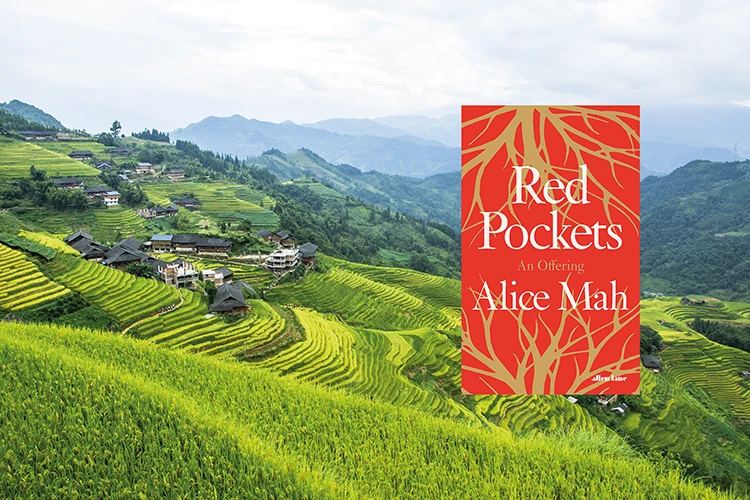
Alice Mah returns to her ancestral village in China to find crumbling graves, spiritual unrest and toxic smog. What follows is a haunting journey through heritage, grief and environmental collapse
By
In Chinese folklore, the neglected dead can become vengeful, hungry ghosts who unleash illness and misfortune on their descendants. The living must feed and care for their deceased relatives. During a visit to her ancestral village in southern China, Alice Mah finds that no-one has swept her ancestors’ graves for decades. She doesn’t know it yet, but the hungry ghosts await her.
Mah is a Canadian-born, British-based academic of Chinese heritage and this book uses her biographical staging posts for a chronicle from the rice villages of South China to her home in post-industrial England, through the Chinatowns of Western Canada, where she grew up, and finally, the isles and industry of Scotland, where she now works. She becomes increasingly troubled not just by her ancestors’ unkempt tombs but by the climate change she sees unfolding in real time (she is a professor of urban and environmental studies and an expert on toxic pollution).
This is a book of memoir, cultural history, environmental injustice and climate change. Such bold ingredients can be risky to tackle together; the jeopardy for an author is that a coherent overarching conceit can remain elusive, and these threads blur into a jumble of esoteric navel-gazing. For the most part, Mah avoids this pitfall, mainly on account of the fact that she’s a strong, lucid storyteller who is able to project her voice in print.
The first section of the book shapes up extremely well. Mah visits her ancestral village and surroundings in southern China almost a century after her grandfather’s last visit. Her journey coincides with Qingming, a spring festival during which ancestral graves are ceremonially swept. The tradition – superstition – pervades society and Mah’s narrative is full of casual snippets that convey the colour of everyday village life, from the fact that the local Taishanese dialect spoken is the same as that spoken in Chinatowns across North America to her barefoot grandfather standing in muddy ponds to catch catfish.
But Mah quickly starts to feel uncomfortable. Thanks to a mix-up over unread and delayed correspondence, she realises that the villagers, led by the village elder, an éminence grise known as (unrelated) Uncle Mah, are expecting her to hand out red pockets – small red envelopes (or hongbao) containing money, a traditional way of giving a financial gift. A darker side to the society her family left behind emerges. Hongbao, she writes, are more than just a nicer way to give money than ‘taping it inside a Hallmark card’. The village comes across not as a cohesive, functioning society but rather a community of grasping, entitled, sullen individuals bent on exploiting tradition for financial gain. Mah and those like her aren’t seen as kin but as banks.
Her old family house is no longer there, dismantled, the bricks used to build a clan hall that during the Cultural Revolution was used for torture and struggle sessions (her great-grandfather’s second wife took her life amid public humiliation during this era). A new, decrepit house stands in its place. ‘It was like I was looking at despair myself,’ she says. Her ancestors’ tombs are lost. Mah’s writing is intelligent and highly observational, and she wonders whether her lack of knowledge of the local dialect makes her more acutely aware of things around her. ‘Are there things one can observe and understand better – or differently – without language? Vulnerability. Soft bodies without protective gear. Children riding alongside heavy trucks. Looming factories.’
The neglect of family graves is reflected in the local environment, for the rural communities she visits are overhung with power lines and positioned next to petrochemical and other industrial smokestacks. An expert in pollution, she realises that levels of PM2.5 particles are sky high, the smog worse than that in Beijing. She loses her sense of smell, the nerves of her nasal cavities burned out by nitrogen dioxide.
Like a chemical irritant, the visit to her ancestral village gets under her skin and becomes an itch that never stops needing to be scratched. In the middle phase of the book, Mah becomes neurotic, paranoid, anxious – about climate change, Covid, everything. Frustratingly, the book, too, occasionally loses its focus and somehow manages to make the natural worries that accompany climate change seem overwrought, tiresome and indulgent. Chapters begin with mordant sentences such as, ‘The wounds and sorrows of the earth are heavy,’ and, ‘There are inner poisons as well as outer poisons.’ For a while, there’s a risk that the end product might be a book that no-one is quite prepared to call out at their book club for fear of seeming to belittle climate change.
If you can persevere through these clouds of gloom and introspection, the final chapters, where Mah explores her new home city of Glasgow and recovers the acuity of the earlier chapters, are elegiac and observational. Mah is intensely self-aware (arguably hyper-aware) and wonders whether her frazzled state of mind is down to an ‘unknown chaotic part of myself’ that has been opened up by the concept of red pockets and hungry ghosts or the consequence of years of studying environmental devastation. Unable to slip the shadow of her ancestors’ neglected graves, she reasons that there are two different but interconnected kinds of pollution. One is material, involving harmful substances in the environment. ‘This is the kind I thought I knew well,’ writes Mah. ‘The other is spiritual, linked to beliefs about impurity and contamination. This is the kind that I did not really want to know.’ But she had little choice but to do so.




